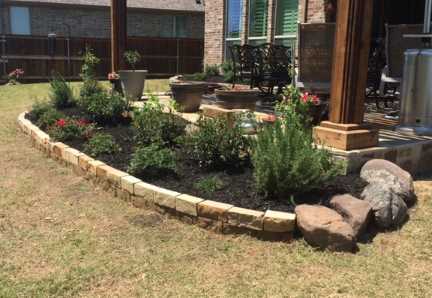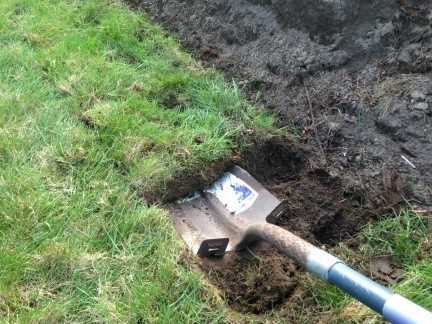Creating a Landscape Bed in 3 Simple Steps

An easy and inexpensive way to add interest, privacy and value to any outside yard space is to add plants. While large shrubs and trees can most often be planted on their own, if you intend to do add multiple plants, you should consider creating a landscape bed area for them. Having a separate space will protect your plants from lawn mower blades and string trimmers. Defining this space also allows you to control the soil quality for your plants. You can also use this space to create a feature in your yard.
Before breaking ground, take time to think about the landscape beds new location. Consider the plants you would like to use: the sunlight the plants will require and their growth habit. You will also need to consider access to water and proper drainage. You can always hire a local professional landscape designer to help create your new planting bed or, with a little patience and muscle, you can do the work yourself in 3 simple steps.
Step 1: Outline the Landscape Bed
Once you have determined the best location for your new landscape bed, you will need to mark the new location. If you have a square or rectangular bed, you can put stakes in the corners and run string between them. For a round or curved bed, use a garden hose around the perimeter to mark the edge of your new garden bed. After marking the perimeter, make it permanent by using spray paint. Simply spray the perimeter of the bed and then remove any stakes or hoses.
Step 2: Remove the Sod
Now that you have your new landscape bed defined, you will want to remove the sod from the new landscape bed location. Depending on your timeline, there are several very effective methods to eliminate sod:
Use a Shovel – Using a square shovel, simply dig down under the roots of the sod and lift up. It works best to first use the shovel to pierce the sod in a square or rectangular shape. After piercing the sod, use the shovel head to dig back into the outlined marks and lift up the sod in several places until you can pick up the entire piece. It’s back breaking work, but effective. To prepare for this, make sure to turn off all irrigation to the landscape bed area several days before. Wet sod is very heavy sod!
Cover It – If you’re not in a big hurry, a very efficient way to clear the garden bed of sod is to kill it. The chemical-free way of doing this would be to cover the entire area of sod and leave it for at least one month. You can use cardboard or plastic sheeting, the thickest you can find. Cover the entire area and secure the covering in place using rocks, stakes or landscape fabric staples. After about one month, check to ensure the grass has died back and you can remove the cover.
Step 3: Add Soil
A crucial part of any new landscape or garden bed area will be adding the right soil to provide your plants with nutrients they need to grow and thrive. Plan to add between 4-6 inches of new soil to your landscape bed. This soil should contain a blend of compost, well-rotted manure, finely ground pine bark mulch, sphagnum peat moss and others. As this organic matter decays, it will help loosen tight clay soils and help sandy soils hold moisture and nutrients. In the north Dallas area, our soil tends to fall more on the clay side, so adding in soil amendment such as sandy loam to your mixture is ideal. Some local garden stores will even sell this soil pre-mixed. To determine how much soil you will need, see the calculation below.
With the new soil in place, you need to mix or till it into the landscape bed. Since you want your plants roots to thrive in this soil, it’s important that your current soil be a part of the mixture. The goal is to blend the new soil with your existing soil. You can do this by hand with a shovel, similar to how you would toss a salad. There are hand tillers available at your local hardware store. You can also rent a tiller from your local hardware store.
Now you are ready for plants, mulch and edging!
How Much Soil Will You Need?
- Determine the square footage or your landscape bed (length in feet x width in feet)
- Convert the depth of the new material to feet (Example: if you are adding 4 inches of new soil, that would be .3 feet, if adding 6 inches, use .5 feet).
Length x Width x Depth = Cubic ft
Example: To calculate the soil needed to add 4 inches of materials to a rectangular landscape bed that runs 30 ft long and 5 ft wide, use the following calculation:
30 ft long x 5 ft wide x .3 ft deep = 45 cubic ft


